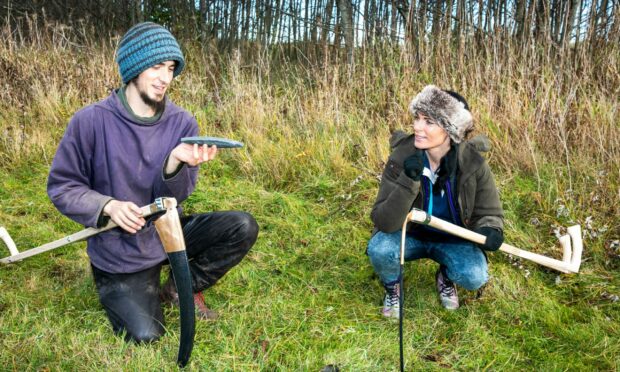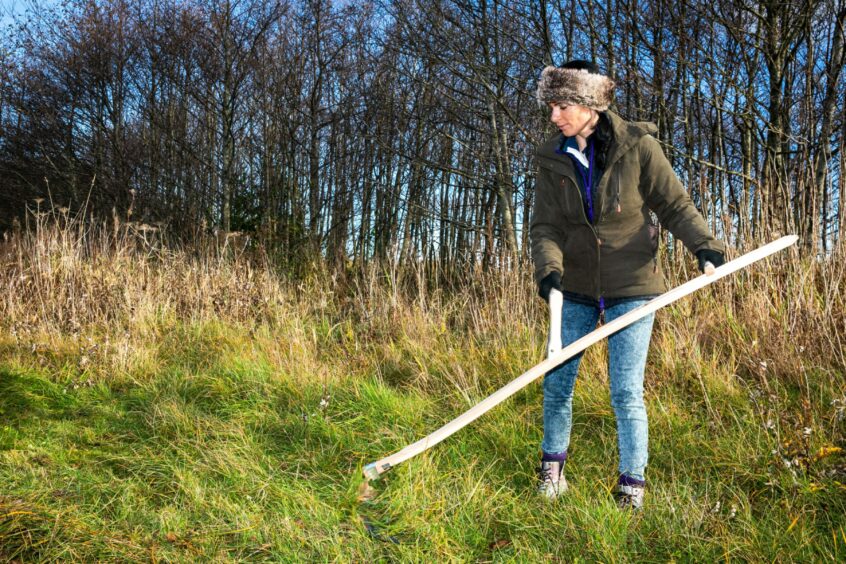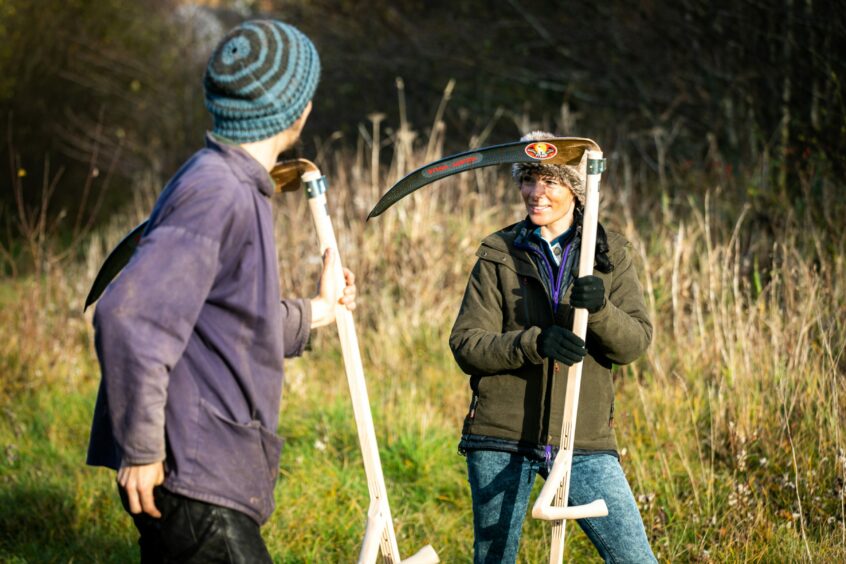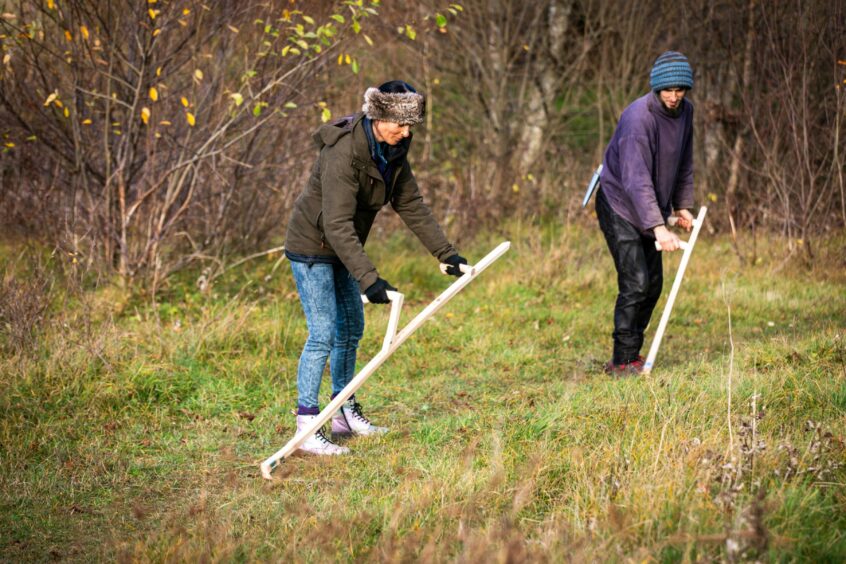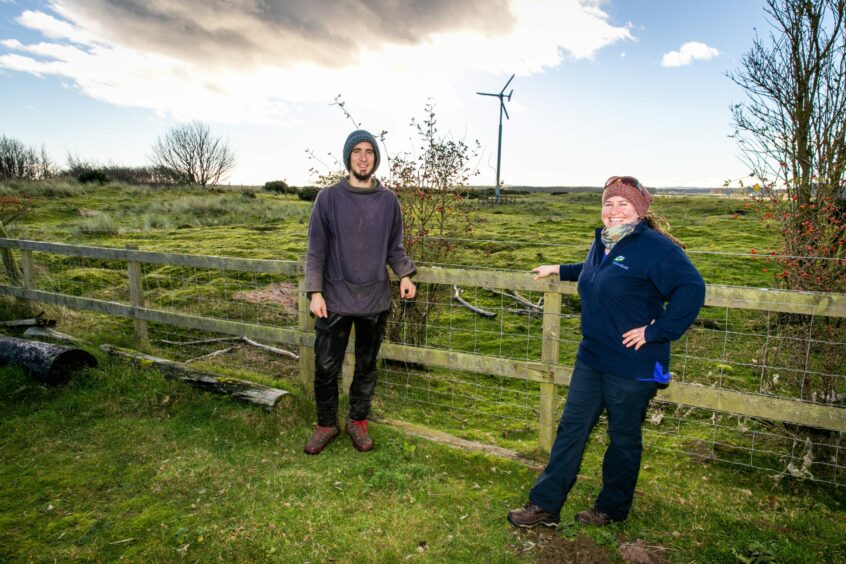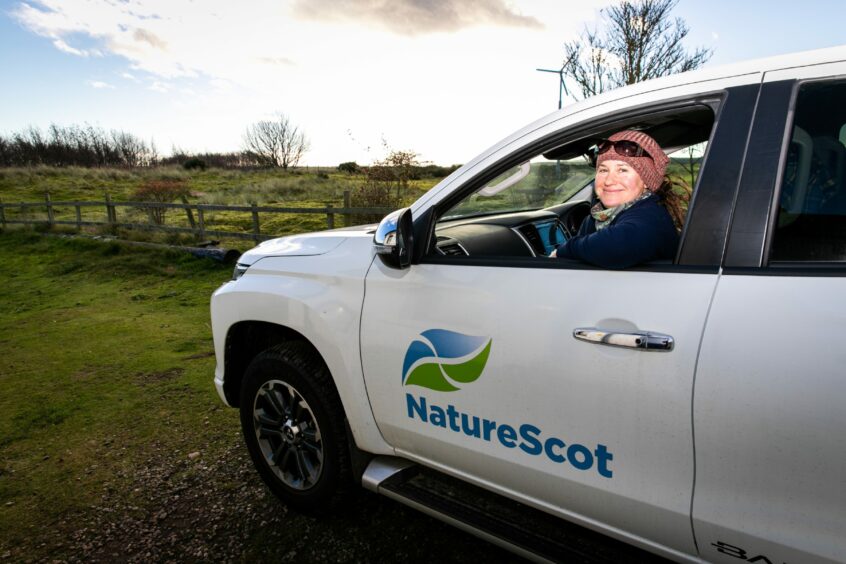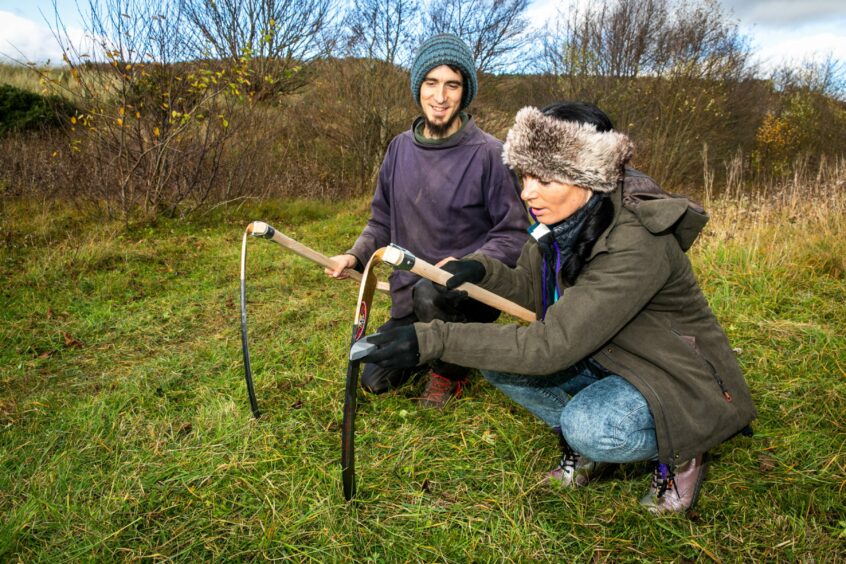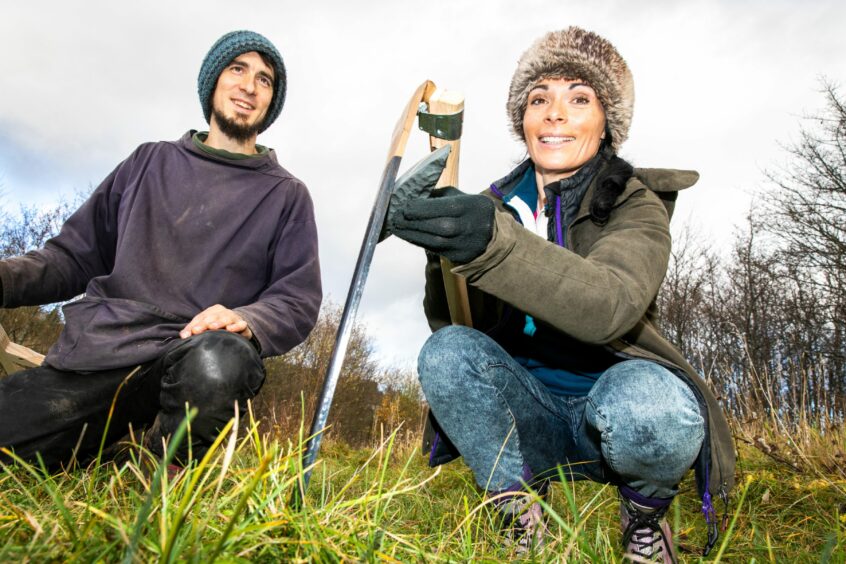Gayle heads to St Cyrus National Nature Reserve to learn about scything and how environmentally-friendly land management is having a revival.
When Caspar Lampkin is spotted wielding his scythe around St Cyrus National Nature Reserve, visitors often ask why he’s opting to do things the hard way.
“Where’s your strimmer?!” some of them joke. He laughs and enjoys a bit of banter, happy in the knowledge that at least he could hear them approaching.
The brilliant thing about scything – actually, there are a few brilliant things – is that it’s a wonderfully quiet process, with only the sound of gentle swishing and the occasional blade sharpening to break the silence. All that’s required is human power – no fuel or oil is needed – and it’s fantastically friendly for the environment.
Creatures galore can escape with their lives intact when Caspar is out in the grasslands scything.
They risk being massacred or at least losing their homes when noisy, polluting strimmers or heavy-duty flail mowers are put to work.
It’s mesmerising to watch as Caspar swings his scythe smoothly and effortlessly through the grass.
“Want a go?” he asks me, handing me a spare scythe. Well, of course!
Having never scythed anything in my life, I’m slightly anxious I’ll hack off a limb and I’m keen to seek as much advice as possible before I get started.
Caspar, 35, assures me that as long as I hold the tool the correct way I’ll be fine. He then demonstrates the perfect stance and shows me how a lot of the action comes from the hips.
The trick is to sweep the scythe round in a semi-circle and to keep it on the ground whether it’s being swung back or forth. You should also move forward about 10cm at a time.
I have a bash but feel rather rigid and hunched over – a bit like a gawky teenage girl at her first disco.
“Stand up straighter, keep your left arm closer to your body and rotate your hips more,” encourages Caspar.
It’s going to take a lot of practice but I soon feel myself relaxing and getting into the swing of things. It’s an art that can take years to master, Caspar reminds me.
It’s two years since Caspar, who describes himself as a self-employed land manager, got in touch with St Cyrus nature reserve manager Therese Alampo to chat about the environmental benefits of scything.
“I use hand tools as much as possible,” he says. “The scythe replaces the strimmer – anything a strimmer can do, a scythe can do better.
“For maintaining grassland and cutting the sides of paths, a strimmer would cut everything up into little bits and you’d then have to go and rake it. The scythe has a long blade which scoops up all the grass and deposits it at the side of the path.
“Because it’s a slower process, scything allows us to watch out for insects and frogs, moths and so on, and gives them time to avoid the blades. We don’t need to buy new parts – this scythe will last me a lifetime – and it doesn’t need fuel or oil.
“When people walk past us while we’re working, we can hear them coming. It’s easy for folk to us ask what we’re doing and have a little chat, which is nice.”
“I use hand tools as much as possible. The scythe replaces the strimmer – anything a strimmer can do, a scythe can do better.”
Caspar Lampkin
In essence, scything is an ancient way of mowing, and it’s an art that Therese is delighted to see being brought back into action.
“Using scythes is part of our effort to reduce emissions at St Cyrus,” she says.
“It’s one of the most important places in the north-east of Scotland for flowering plants; the diversity here is incredible.
“There’s a history of salmon fishing spanning about 200 years here, with fishermen burning long, rank vegetation to protect nets spread on the drying greens from catching fire.
“Burning year in and year out meant the vegetation became shorter, and we ended up with a very short grassland which is perfect for flowering plants.”
When salmon fishing ended in 1998, NatureScot, formerly known as Scottish Natural Heritage, and which looks after the reserve, needed a new strategy to manage the grassland.
“We need to keep the vegetation cut short to encourage wildflowers to grow,” explains Theresa.
“Grazing animals like cows and sheep would be ideal on a site like this but we’ve only got rabbits!
“We were using big flail mowers and strimmers for a while but they use a lot of fuel, need a lot of maintenance and they’re heavy, noisy and bad for the environment.
“They’re not good for little creatures like frogs and toads; there’s a risk of decapitating or injuring them.
“Big machinery can’t do the intricate cutting that scything can, scalloping edges and making subtle swerves and curves, creating a diversity of habitat.
“Scything, which can be done silently and purposefully, makes it easier to leave a sunny spot for insects to bask in and Caspar can choose whether some areas are open and others are not.
“Wild flowers can’t compete with larger, taller vegetation like nettles but if they’re cut back, they can come through and really thrive in the light. It’s really about regaining biodiversity that’s been lost.”
Since Caspar teamed up with the reserve, there’s been great community involvement, with volunteers from across the region coming along to learn how to scythe and helping to gather cut grass into piles and take away to be composted.
Therese says: “It’s great to get people involved, to see them really enthusiastic about grassland management, and to introduce them to different areas of the reserve and teach them skills they can use on their own land.”
- For more details about St Cyrus National Nature Reserve, see nature.scot
